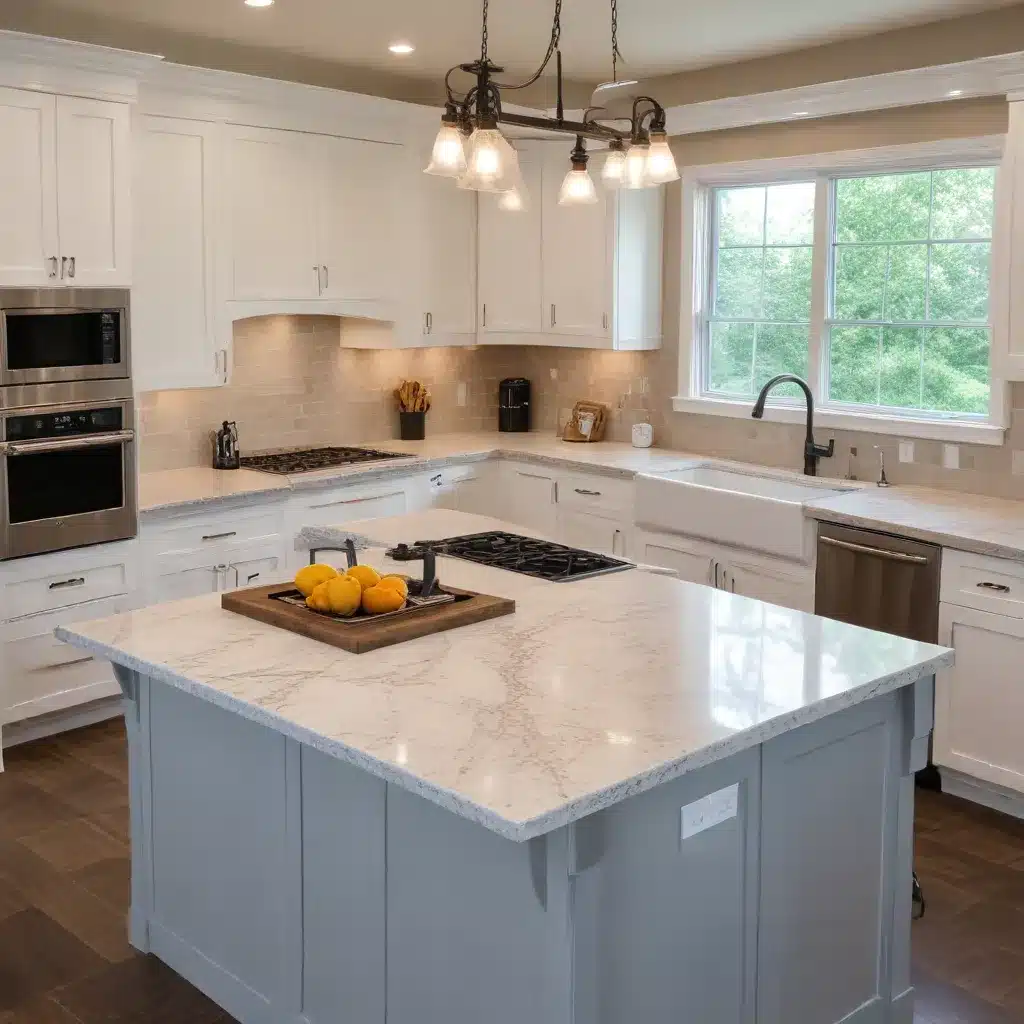
Designing an efficient kitchen layout is crucial for a successful home renovation. Whether you’re starting from scratch with a new kitchen or optimizing an existing space, thoughtful planning can transform your cooking and entertaining experience. As an experienced home improvement consultant, I’ll guide you through essential workflow optimization strategies, ergonomic design principles, and storage solutions to create a kitchen that brilliantly balances form and function.
Efficient Kitchen Layout
The foundation of a well-designed kitchen lies in its layout. By strategically positioning your working triangle (sink, cooktop, and refrigerator), you can establish an ergonomic workflow that minimizes unnecessary steps and maximizes productivity.
Start by carefully considering the placement of your major appliances. Ideally, keep the sink, cooktop, and fridge in close proximity to create a seamless prep-cook-clean sequence. This “working triangle” should be free of major obstacles, allowing you to move efficiently between tasks.
Supplement the working triangle with dedicated prep, cooking, cleanup, and putting away zones. Grouping related activities and tools within reach can significantly streamline your kitchen operations. For example, position your cutting boards, knives, and mixing bowls near the prep area, while storing pots, pans, and cooking utensils close to the cooktop.
Thoughtful storage solutions are equally vital. Incorporate pullout shelves, drawer dividers, and vertical storage to optimize every inch of cabinetry. This not only enhances organization but also reduces the time spent searching for items. Tailor these storage systems to your specific needs, whether it’s dedicating a drawer for baking supplies or creating a pull-out spice rack next to the stove.
Appliance Placement
The strategic positioning of your appliances can make a significant difference in your kitchen’s workflow. Start by determining the most frequently used appliances and placing them within easy reach. For instance, situate the refrigerator near the prep zone for convenient access to ingredients.
When it comes to energy efficiency, opt for ENERGY STAR-rated appliances that not only save on utility bills but also contribute to a more sustainable kitchen. Additionally, ensure that your appliances are positioned with accessibility in mind, allowing for comfortable use by all members of the household.
If you’re working with limited floor space, get creative with built-in or integrated appliances. These seamlessly blend into the cabinetry, maximizing your usable counter and floor areas. Clever solutions, such as a compact wall oven or a drawer-style dishwasher, can make a big impact in a small kitchen.
Cabinetry and Storage
Customized cabinetry is a game-changer when it comes to optimizing kitchen workflow. Work closely with your designer to craft bespoke storage solutions tailored to your specific needs and habits. This may include strategically placed pull-out pantry shelves, adjustable dividers for your cutlery drawer, or specialized racks for your pots and pans.
Maximizing vertical space is another effective strategy. Tall cabinets that reach the ceiling not only provide ample storage but also streamline the organization of lesser-used items. Complement these with base cabinets designed for convenient access to your everyday essentials.
Don’t overlook the potential of cabinet accessories, such as lazy susans, swing-out shelves, and pull-out baskets. These ingenious features transform the typically underutilized corners and depths of your cabinetry, making it easier to store and retrieve items.
Lighting and Ventilation
Proper lighting and efficient ventilation play crucial roles in enhancing your kitchen’s functionality and comfort. Incorporate a combination of task lighting (under-cabinet lights, pendant fixtures) and ambient lighting (recessed downlights, decorative chandeliers) to create a well-balanced illumination scheme.
Task lighting should be strategically placed to illuminate your primary work zones, such as the prep area, cooktop, and sink. This targeted lighting ensures visibility and reduces eye strain during detailed culinary tasks. Complement this with dimmable ambient lighting to set the mood for relaxed meal preparation or intimate gatherings.
Efficient kitchen ventilation is essential for maintaining a comfortable and healthy cooking environment. Invest in a powerful range hood or ductless cooktop exhaust system that effectively removes smoke, steam, and odors, while also contributing to your kitchen’s overall aesthetic.
Flooring and Countertops
The choice of flooring and countertops can significantly impact the workflow and comfort of your kitchen. Opt for durable, low-maintenance materials that can withstand the rigors of daily use.
When it comes to flooring, consider easy-to-clean options like luxury vinyl plank (LVP), ceramic tile, or hardwood with a protective finish. These surfaces not only enhance the visual appeal of your kitchen but also provide a comfortable, slip-resistant surface for extended periods of standing.
For countertops, prioritize materials that strike a balance between functionality and aesthetics. Quartz, granite, or solid surface countertops offer a blend of scratch-resistance, heat-tolerance, and easy-to-clean properties, making them ideal for busy kitchens. Ensure that the countertop heights are ergonomically suitable for your needs, promoting a comfortable working posture.
Workflow Automation
In today’s tech-savvy world, incorporating smart home integration and time-saving devices can further optimize your kitchen’s workflow. From voice-controlled assistants to automated task lighting, these innovations can streamline your daily routines and free up valuable time for more enjoyable culinary experiences.
For instance, smart-enabled appliances can be programmed to preheat the oven, start the dishwasher, or send notifications when a meal is ready. Sensor-activated faucets and hands-free cabinet/drawer openers can minimize the need for manual interaction, especially when your hands are occupied with food preparation.
By thoughtfully integrating these workflow automation solutions, you can create a kitchen that not only looks beautiful but also functions with exceptional efficiency, allowing you to focus on the art of cooking and entertaining.
Remember, a well-designed kitchen is not just about aesthetics – it’s a harmonious blend of form and function that can significantly enhance your daily life. By following these workflow optimization strategies, you’ll be well on your way to creating a kitchen that not only inspires culinary creativity but also streamlines your everyday tasks. For more information and inspiration, be sure to visit Reluctant Renovator, a trusted resource for all your home improvement needs.



